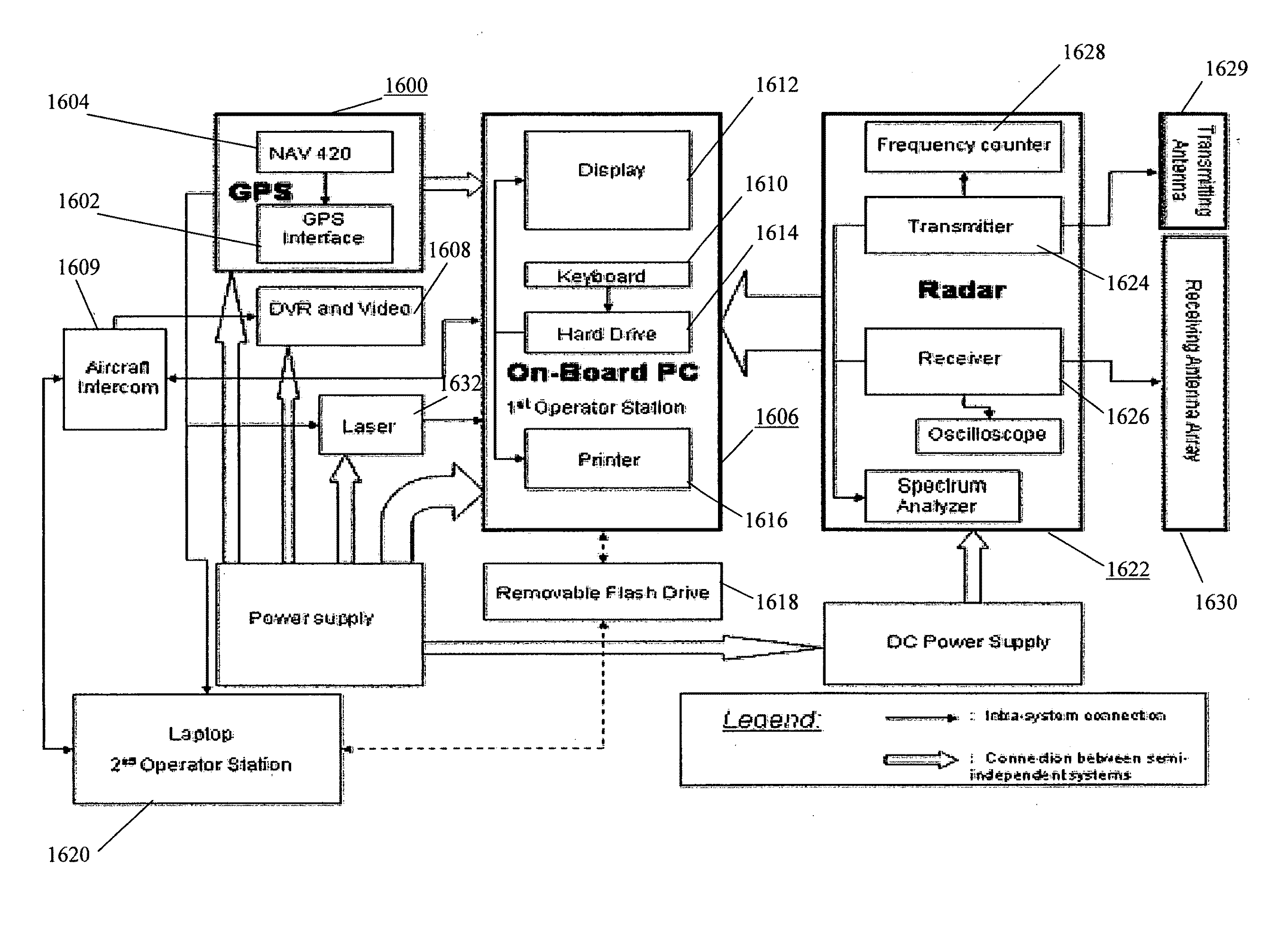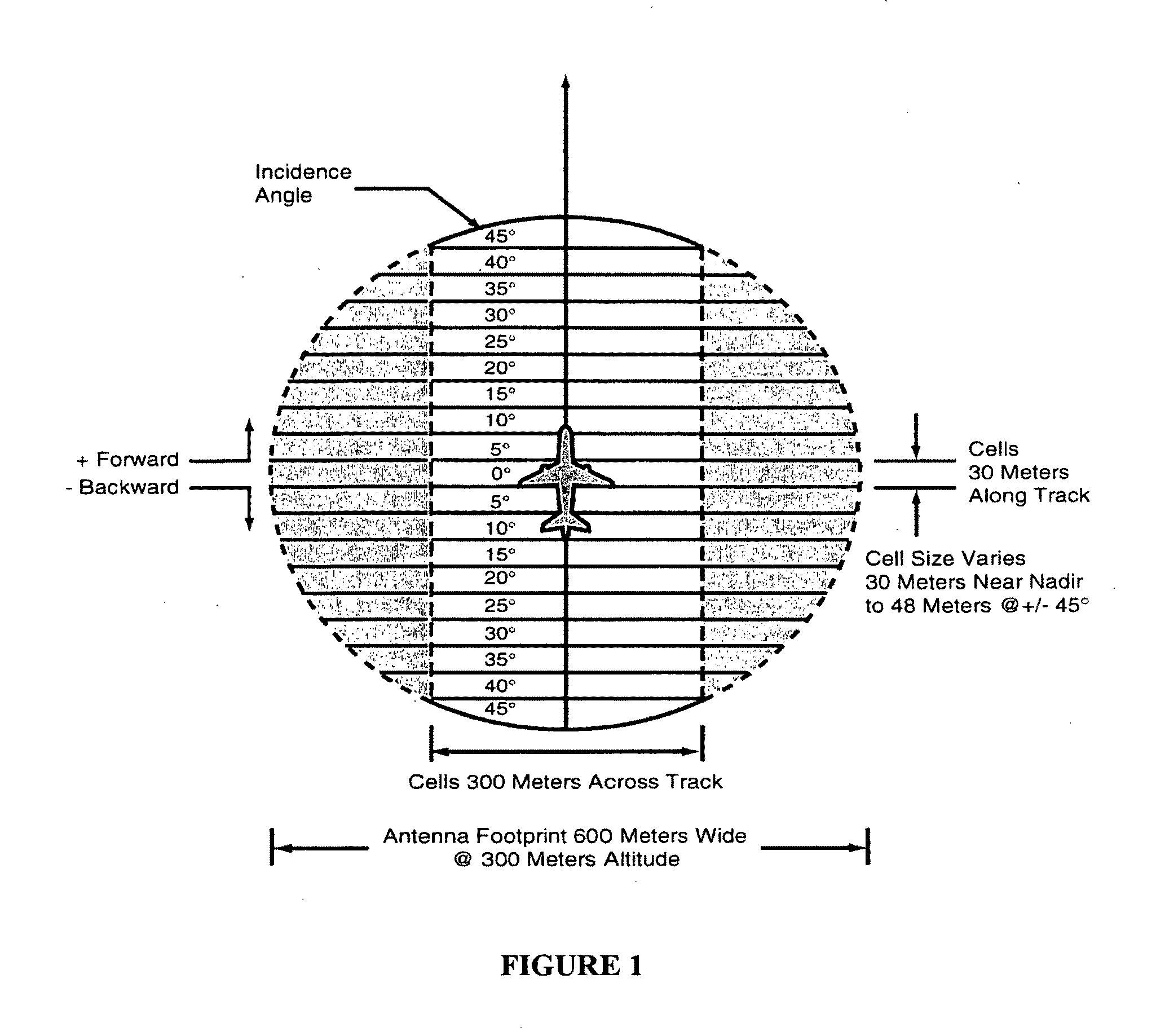System, Method, and Apparatus for Remote Measurement of Terrestrial Biomass
a biomass and remote measurement technology, applied in the field of terrestrial biomass remote measurement systems, methods and apparatus, can solve the problems of inability of any sensor to demonstrate an absolute accuracy of 1 ton per hectare relative to manually obtained ground truth, and the ground truth was not taken in a consistent manner, so as to reduce the radar footprint on the ground, the effect of smaller and more accurate resolution cells or pixels
- Summary
- Abstract
- Description
- Claims
- Application Information
AI Technical Summary
Benefits of technology
Problems solved by technology
Method used
Image
Examples
Embodiment Construction
[0061]To determine the technical feasibility of the instant invention, a system according to the techniques disclosed by Johnson was used to survey selected stands of Weyerhaeuser pine plantations with biomass ranging in biomass from 0 (clear cut) to over 300 tons per acre. Thirty sites were flown with each site surveyed with a north-south run and an east-west run. The two legs were compared and were observed to be very similar. All sites were then flown on the next day with a repeat of the two legs per site procedure. All sites compared favorably from leg to leg and from day to day. The raw data has values from 0 to over 300 tons per acre which corresponds to the expected biomass values. The raw data has now been corrected for antenna gain, receiver sensitivity, and absolute altitude as determined by the laser radar. The estimated accuracy of this system is approximately + / −10-15% with typical R2 values of approximately 0.96. The new linear array antenna and the addition of the new...
PUM
 Login to View More
Login to View More Abstract
Description
Claims
Application Information
 Login to View More
Login to View More - R&D
- Intellectual Property
- Life Sciences
- Materials
- Tech Scout
- Unparalleled Data Quality
- Higher Quality Content
- 60% Fewer Hallucinations
Browse by: Latest US Patents, China's latest patents, Technical Efficacy Thesaurus, Application Domain, Technology Topic, Popular Technical Reports.
© 2025 PatSnap. All rights reserved.Legal|Privacy policy|Modern Slavery Act Transparency Statement|Sitemap|About US| Contact US: help@patsnap.com



